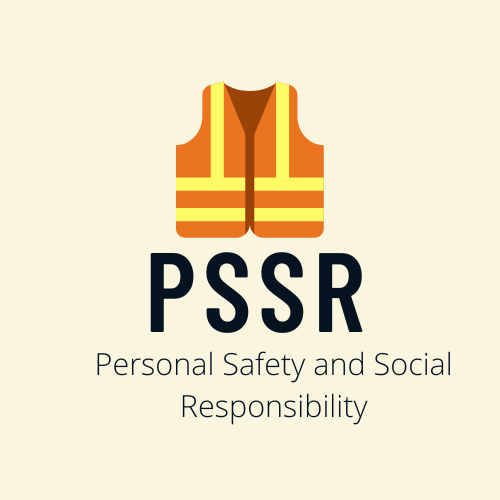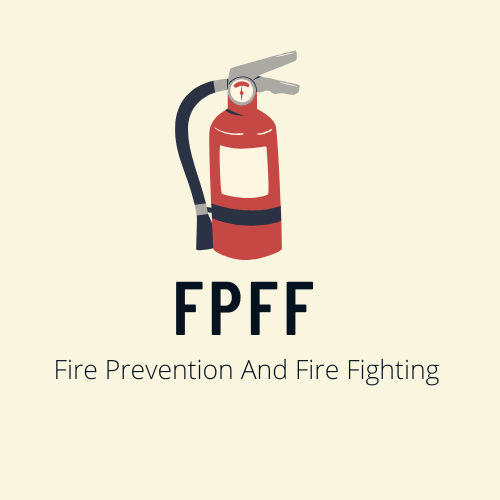FPFF exit exam questions and answer quiz contain questions Answer
If you find any questions incorrect, please let us know by Clicking here.
1. Where will the ship's officers find
necessary information regarding the ship's fire protection arrangement,
fire-detection equipment and fire extinguishing appliances?
In permanently exhibited muster list
In
permanently exhibited fire control plans
In special instruction and information folder at all fire control
stations
In permanent exhibited alarm instructions
2. Three
methods of fire protection regarding internal divisional bulk heading may be
adopted in accommodation and service spaces in cargo ships. Which of the given
methods do not correspond to present rules?
Fitting of an automatic sprinkler, fire-detection and alarm system
for the detection and extinction of fire in all spaces in which fire might be
expected to originate
Fitting of a fixed fire-detection and alarm system in all spaces
where fire might be expected to originate. No accommodation space bounded by an
'A' or 'B' class division to exceed 500 m?
Construction of all internal bulkheads of non-combustible class
'B' or 'C' divisions
Construction
of all internal bulkheads of class 'A' divisions
3. What
information is found on a ship's fire plan?
The duties of each crew member in case of fire
The signal used on the ship to indicate there is a fire.
The action to take if you heard the fire alarm.
The
locations of various firefighting appliances and equipment.
4. Sanitary-,
ballast-, bilge- or general service pumps may be accepted as fire pumps provided:
They can be started from a position outside the engine room
They are ready for use as fire pumps at any time
They are
not normally used for pumping oil
They are fitted with automatic start connected to the fire alarm
5. What quantity of reserve fuel is to be
available for diesel driven fire pumps outside of the main machinery space?
Sufficient
amount for fifteen hours operation at full capacity
20 liters
40 litters
Sufficient amount for six hours operation at full capacity
6. 'A'
class (fire) divisions are those divisions formed by bulkheads and decks. Which
of the following requirements does not comply with the rules?
Preventing passage of smoke and flame to the end of a one-hour standard test
Suitably stiffened
Insulated
on both sides with approved non-combustible material
Constructed of steel or other equivalent material
7. 'C'
class (fire) divisions shall meet one of the listed requirements:
Constructed of low flame spread material
Constructed of ignition resistant material
Constructed
of non-combustible material
Constructed of steel or equivalent material
8. Which
of the following types of breathing apparatus are most likely to be found
onboard a modern ship?
Oxygen Breathing Apparatus.
Compressed
Air Breathing Apparatus.
Gas Mask type Breathing Apparatus.
Atmospheric Breathing Apparatus.
9. In what language/languages shall the fire
control plans/folders (or copies of plans and folders) be?
The English language
The Flag State language with copies in English or French
The Flag
State language with copies in English
The Flag State language
10. What
does A.F.F.F. stand for in relation to firefighting?
Aqueous Fire Fighting Foam
Aqueous
Film Forming Foam.
Active Fire Finishing Foam.
Anti-Fire Frothing Foam.
11.
Under ISO standard 3941 (used mostly
in Europe), a fire involving a flammable solid fuel would be classed as which
of the following?
Class A.
Class B.
Class C.
Class D.
12. Which
of these extinguishing agents is best to use on a fire involving a burning
cabin that had been electrically isolated?
Dry Powder - Dry Chemical.
Foam.
Water.
Carbon dioxide (CO2).
13. What
do the words 'spontaneously combustible' mean?
When this substance burns it burns completely and does not leave
any residue or ash.
The
substance can catch fire by itself without an external source of heat or
ignition.
The substance is very difficult to set alight, even when it is
very hot.
When the substance burns it becomes very hot.
14. What fixed and portable fire extinguishers
are often found on gas tankers, because they are considered to be most
effective with burning gas?
Water.
Foam.
Dry Powder
- Dry Chemical.
CO2.
15. How
many fireman's outfits are required to be carried on tankers?
At least
four sets.
At least three sets.
At least one set.
At least two sets.
16. Fuel
flowing in a pipe is prone to which of the following ignition sources?
High pressure action.
Friction.
Static
electricity.
Chemical reaction.
17. What
type of release is allowed for fixed gas fire extinguishing installations
onboard?
An
automatic release system activated by fire detectors.
A manually
operated release only.
Any automatic release system.
An automatic release system activated by fire alarms.
18. In
addition to a fire suit, a fireman's outfit also comprises breathing apparatus
and a fireproof lifeline. According to SOLAS- how many such sets of fireman's
outfit are required to be carried by all ships?
At least one.
At least
two.
As required by the ship's administration.
At least three.
19.
Which firefighting system is the most
efficient and with the least side effects in the event of a fire in the engine
room?
The powder extinguishing system.
The central foam extinguishing system.
The sprinkler extinguishing system.
The
central CO2 extinguishing system.
20. A self-contained Breathing Apparatus should contain at least 1200 litters of air. How
long should this last a normal person who is not carrying out hard work?
45 minutes
15 minutes
60 minutes
30 minutes
21. Fuel
oil from a leaking fuel pipe has been collected in a drip tray under the boiler furnace. The oil is suddenly ignited by a backflash from the boiler burner. The boiler room is manned and the person present has the choice of various
extinguishers. The fire is purely a surface fire. What would be the preferable
extinguisher?
- Powder
- Any of the mentioned alternatives
- CO2
- Water
22. In
pump rooms and pipe tunnels 'flameproof' electric light fittings are generally
fitted. This means that:
Even if a fire occurs, it will not consume the fitting?
The fitting is completely gastight and no gas can enter into
contact with the bulb and electric connections?
The electrical supply will disconnect automatically in cases of
fire?
Gas may
enter, but even if an explosion takes place the fittings is so strong that the
explosion will be contained within it and will not be blow out?
23. In accommodation the automatic sprinklers
shall come into operation within the temperature range:
56 - 67
68 - 79
80 - 90
48 – 55
24. Which
of the following statements does not apply to fire doors in main vertical zone
bulkheads and stairway enclosures in passenger ships?
Question Image
If normally locked they do not have to be self-closing.
They shall be of the self-closing type.
They shall be capable of being closed from a control station
unless they are normally closed.
They can
have hold back hooks not subject to control station release providing the
emergency plan details a person to close them.
25. Oily
rags and metal twist pose a particular fire hazard because:
They are not a hazard unless ignited.
They generate their own oxygen when ignited and are therefore
difficult to extinguish.
They are
liable to spontaneous combustion.
They are not a hazard.
26. Where
on board would you find out which fire sections are enclosed by 'A' or 'B'
class divisions?
On the fire
control plan
In the stability book
On the capacity plan
On the general arrangement plan
27. Which
of the following statements is NOT correct about high expansion foam?
It extinguishes by smothering.
It has only a limited cooling effect.
You cannot
survive in H.E. foam as the oxygen content is reduced.
You can survive in H.E. foam by breaking the bubbles to release
the air.
28. In
fire-fighting, what does the term 'boundary starvation' refer to?
Cooling the area around a fire to stop it spreading
Closing doors and hatches at the boundary of a fire
Mustering fire fighters and materials in the area near the fire
Removing
the fuel from the boundary of a fire to stop it spreading further
29. What
is the maximum allowed suction head for the fire pump?
4.5
meters.
9 meters.
1.5 meters.
3 meters.
30.
What type of fire hose nozzles must be
available on board?
Dual
purpose (jet/spray) type incorporating shutoff.
Jet type.
Dual purpose (jet/spray type).
Spray type.





